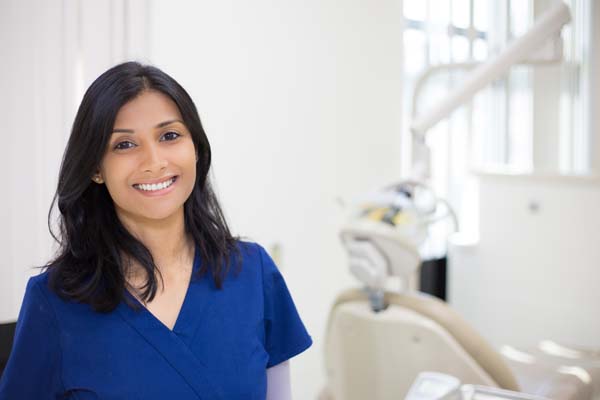When is Gum Grafting Recommended by Your Dentist?

Gum grafting is a procedure that is performed to protect a person's teeth from the effects of gum recession. The procedure can also be performed to improve the appearance of a person's smile.
Gum recession occurs when tissues that support and surround teeth begin to pull away from them. It can result in teeth roots being exposed, which leads to damage to the supporting bone structures that keep teeth in place. It is one of those dental issues that can be hard to detect before it becomes severe.
Many people do not notice their gums receding since the process occurs slowly over time. Exposed teeth roots not only ruin the appearance of a person's smile, but they can also lead to increased sensitivity and decay of the roots. The roots do not have enamel to protect them from the acids in the mouth. Gum recession will eventually lead to a very serious issue if it is left untreated. It can lead to an infection of the roots, damage to jawbone tissue and the eventual loss of a tooth.
How gum grafting is used to treat gum recession
There are three main types of gum tissue grafts that are performed by dentists. Each type is used to deal with a specific set of issues.
1. Connective tissue grafts
This type of graft is commonly used to treat exposed teeth roots. It involves cutting a flap of skin at the roof of the patient's mouth and extracting soft tissues from the area. These tissues are known as subepithelial connective tissues. They are stitched to the gum tissue around exposed teeth roots, and the flap is stitched up once adequate amounts of gum tissue have been extracted.
2. Free gingival grafts
This is similar to the first procedure, but the soft tissue is extracted directly from the roof of the patient's mouth. The tissue is then attached to the area that needs treatment. This procedure is more likely to be performed on people with thin lips as a way to enlarge their gums.
3. Pedicle grafts
During this type of graft, a flap is cut near the tooth that needs to be repaired. The flap is then pulled to cover the exposed root, then it is sewn in place. This procedure is typically reserved for people with lots of healthy gum tissue around their receding gums.
Recovering from gum grafting
Most patients will be able to go home after the procedure. The dentist might administer a sedative to keep the patient relaxed during the procedure, so plans should be made for a ride home.
The dentist will also educate the patient about any medication they need to take and what type of foods to eat during the recovery process. Generally speaking, patients should not brush or floss the gums until the area has fully healed. Antibiotics might be prescribed after the procedure if the patient has gum disease. They need to be taken as prescribed to be effective.
Stop gum recession in its tracks
If you are dealing with a receding gumline, stop by our clinic for an evaluation.
Request an appointment here: https://spectrumsurgical.net or call Facial Spectrum at (816) 524-4334 for an appointment in our Lee's Summit office.
Check out what others are saying about our services on Yelp: Read our Yelp reviews.
Recent Posts
The jawbone is the part of the face that holds many essential elements together, such as the teeth, ligaments, and muscles; however, bone grafting may sometimes be necessary if the jawbone is too weak to perform these tasks. A person’s jawbone can deteriorate over time, whether due to age, genetics, poor oral health, cancer, or…
Finding lasting relief from issues such as misalignment and facial asymmetry can involve specialized procedures. Fortunately, corrective jaw surgery is a reliable option for addressing these concerns. A dental specialist realigns the upper or lower jaw during this process to promote better function and comfort. Although the procedure can benefit health and appearance significantly, a…
Many individuals seek rhinoplasty to enhance facial harmony, improve nasal function, or correct structural abnormalities. As a surgical procedure that reshapes the nose, rhinoplasty can address aesthetic concerns as well as breathing difficulties caused by structural defects such as a deviated septum. Understanding the consultation process, surgical techniques, and what to expect from the recovery…
The facelift is one of the oldest and most well-known cosmetic surgeries for restoring a youthful appearance to the face. If you are considering this procedure, it is important to understand the steps of the process and the time commitment involved. The specifics of the process can vary depending on the patient; however, here is…


